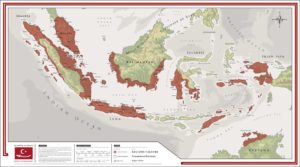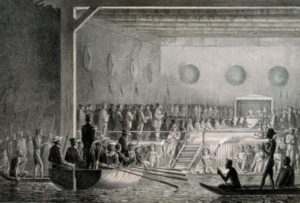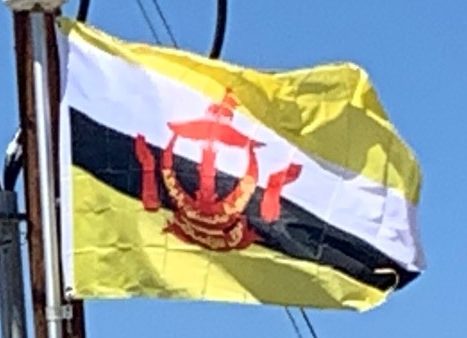During the 15th century, Po-ni had seceded from Majapahit and then converted to Islam, thus transforming into the independent Sultanate of Brunei. Brunei became a Hashemite state when she allowed the Arab Emir of Mecca, Sharif Ali, to become her third sultan. Scholars claim that the power of the Sultanate of Brunei was at its peak between the 15th and 17th centuries, with its power extending from northern Borneo to the southern Philippines (Sulu) and even in the northern Philippines (Manila) which Brunei incorporated via territorial acquisition accomplished through royal marriages.
War with Spain and Decline:
Brunei briefly rose to prominence in Southeast Asia when the Portuguese occupied Malacca and thereby forced the wealthy and powerful but displaced Muslim refugees there to relocate to nearby Sultanates such as Aceh and Brunei. However, European influence gradually brought an end to the regional power, as Brunei entered a period of decline compounded by internal strife over royal succession. In the face of these invasions by European Christian powers, the Ottoman Caliphate aided the beleaguered Southeast Asian Sultanates by making Aceh a protectorate and sending expeditions to reinforce, train and equip the local mujahideen.

Eventually, the Spanish took advantage of the rivalries among the port-kingdoms of the Philippines and had incorporated some these kingdoms in a coalition against Brunei. Spain was still fresh from the Reconquista an 800 year old war to Re-Christianize a Spain which was invaded by the Umayyad Caliphate. So, their knowledge of, an admiration of, as well as a hatred of Islam was still fresh in their hearts when Spain and Portugal decided to wage war against the entire Islamic world. The Spanish regarded Brunei the center of Islamic preaching in the Philippines. Spain declared war in 1578, planning to attack and capture Kota Batu, Brunei’s capital at the time. Manila itself was captured from Brunei, Christianised and made a territory of the Viceroyalty of New Spain which was centered in Mexico City.
Eventually, the Spanish invaded the capital on 16 April 1578. The Sultan Saiful Rijal and Paduka Seri Begawan Sultan Abdul Kahar were forced to flee to Meragang then to Jerudong. In Jerudong, they made plans to chase the conquering army away from Brunei. Suffering high fatalities due to a cholera or dysentery outbreak, the Spanish decided to abandon Brunei and returned to Manila on 26 June 1578, after 72 days.
Brunei eventually descended into anarchy. The country suffered a civil war from 1660 to 1673.
British Intervention:
In the 1880s, the decline of the Bruneian Empire continued. The sultan granted land (now Sarawak) to James Brooke, who had helped him quell a rebellion and allowed him to establish the Kingdom of Sarawak. Over time, Brooke and his nephews (who succeeded him) leased or annexed more land. Brunei lost much of its territory to him and his dynasty, known as the White Rajahs.

Sultan Hashim Jalilul Alam Aqamaddin appealed to the British to stop further encroachment by the Brookes. The “Treaty of Protection” was negotiated by Sir Hugh Low and signed into effect on 17 September 1888. The treaty said that the sultan “could not cede or lease any territory to foreign powers without British consent”; it provided Britain effective control over Brunei’s external affairs, making it a British protected state (which continued until 1984). But, when the Kingdom of Sarawak annexed Brunei’s Pandaruan District in 1890, the British did not take any action to stop it. They did not regard either Brunei or the Kingdom of Sarawak as ‘foreign’ (per the Treaty of Protection). This final annexation by Sarawak left Brunei with its current small land mass and separation into two parts.
